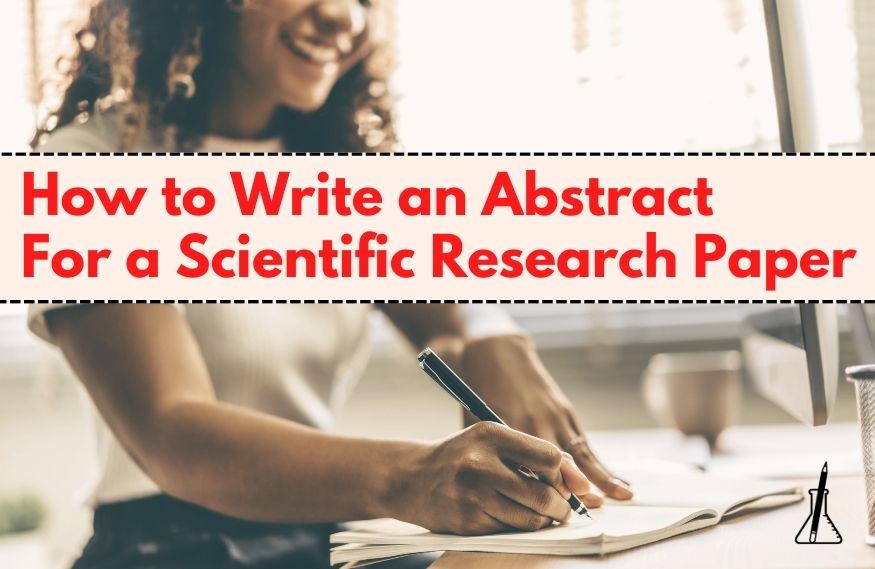The abstract is the most important piece of your scientific article. In this post, you’ll get your hands on the scientific abstract template that normally only members of our scientific writing program, the Researchers’ Writing Academy, get access to! Writing a scientific abstract according to the suggested scientific abstract structure will make your paper more likely to get accepted, read and cited.
Take a few seconds and think how you read other researchers’ papers. Let me guess… You first read the title and then you read the abstract, right? This means the scientific abstract is the second impression you will make on your editor and peer-reviewers too. Therefore, it’s worthwhile to tweak the abstract for a research paper until it is, oh yes, perfect.
WRITING A SCIENTIFIC ABSTRACT – THE READER’S PERSPECTIVE
So, what would you like to know when you read the abstract of a scientific paper? I’m guessing you would either like to understand whether the scientific paper reports a specific finding you are looking for or you are just generally curious what the paper is about. This is why a scientific abstract should make sense on its own — the reader shouldn’t be required to read the whole scientific article to understand the context, main result or conclusion of the study.
Instead, it’s helpful for the reader when the scientific abstract is told as a story. Identifying the story of the scientific paper we are writing is the first step in the writing process that I guide researchers through inside the Researchers’ Writing Academy. Telling a story in your scientific paper will make it easier for your reader to understand the results you are communicating AND their significance.

HOW TO WRITE A SCIENTIFIC ABSTRACT
So, how do we write a research abstract that tells a story? Here are the components your scientific abstract needs to include so that it tells a story:
- Context to your research topic
- Context to your particular study
- The specific problem you solve
- The central message of your paper
- A summary of your main results
- The broader perspective that put your results into context
Ideally, you are already super clear on each component before you start writing a scientific abstract. Once your paper is written, you can then just put these story components together in a single paragraph, and voilà, the abstract of your scientific paper is ready.
SCIENTIFIC ABSTRACT TEMPLATE
You’re going to like what’s coming because I’m giving you the exact template that I teach our Researchers’ Writing Academy members. This scientific abstract template works for many journals. However, some journals specify a scientific abstract structure. In this case, I recommend to allocate the components described above to the prompts you are being given by the journal.
Here’s how you write an abstract for a research paper:
1. PROVIDE CONTEXT TO YOUR RESEARCH TOPIC
The first one or two sentences create the setting and provide an introduction to the topic of your study. As a rule of thumb, every reader of the journal should understand this first part of your scientific abstract. This means that for a journal with a broad readership, the introduction is ideally quite general. Use the present tense.
2. PROVIDE CONTEXT TO YOUR PARTICULAR STUDY
You can use the next one or two sentences of your scientific abstract to delve deeper into the introduction to your scientific study. Provide the background that your reader will need to understand what context your study is situated in. This is written in present tense too.
3. DESCRIBE THE SPECIFIC PROBLEM YOU SOLVE
Now it’s time to introduce tension! State the problem in the research field that your study addresses — in one concise sentence. Here it’s important to be as specific as possible. Present tense for this one too.
4. STATE YOUR CENTRAL MESSAGE
Then you summarise the central message of your research starting with phrases such as “Here, we show”, “In this article, we demonstrate” or similar. Ideally, this sentence is the exact answer to the problem stated in step 3. Still present tense.
5. SUMMARISE YOUR RESULTS
It’s finally time to talk about your findings in two or three sentences. Here it is important to focus on the most important results. Don’t make the mistake of describing several results in one sentence. When it comes to the methods you used, only mention them if they are central to the central message you described in step 4. Write these sentences in the past tense.
6. STATE THE BROAD PERSPECTIVE
In the last one or two sentences of your scientific abstract, put your results in a broader perspective. Explain why your findings are significant and what impact your findings are likely or possibly going to make in your field of research or for an application – be as specific as possible here. Use the present and/or future tense here.
WRITING A SCIENTIFIC ABSTRACT – NEXT STEPS
If you use the above scientific abstract template, your abstract will make sense on its own, present a concise summary of your scientific paper and tell a compelling story.
But I know from experience how hard it can be to nail each component of the scientific abstract. The prompts are relatively simple but it pays off to nail each one of them!
The good news is that this is exactly what we help you with inside the Researchers’ Writing Academy. If you want us to coach you through defining the scientific story of your paper and writing a concise, coherent and compelling abstract, I recommend watching our free training class! It’s only an hour long, and by clicking the orange button below you can get immediate access or save it for later. So, click the button now!







